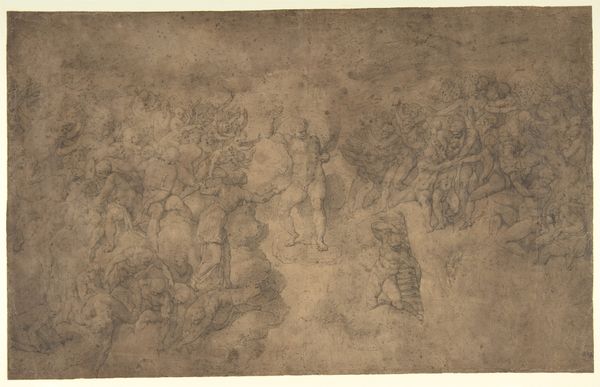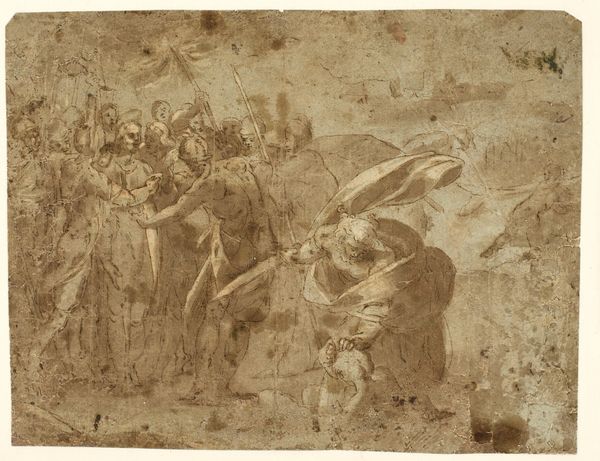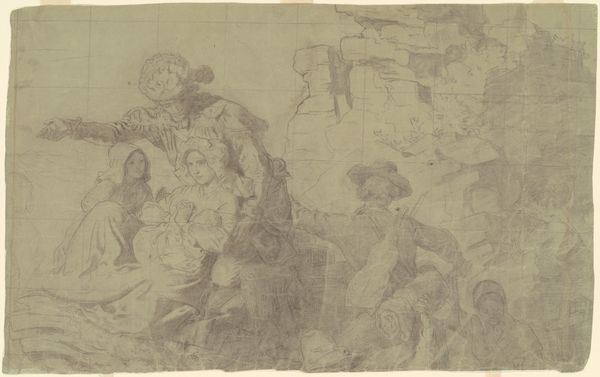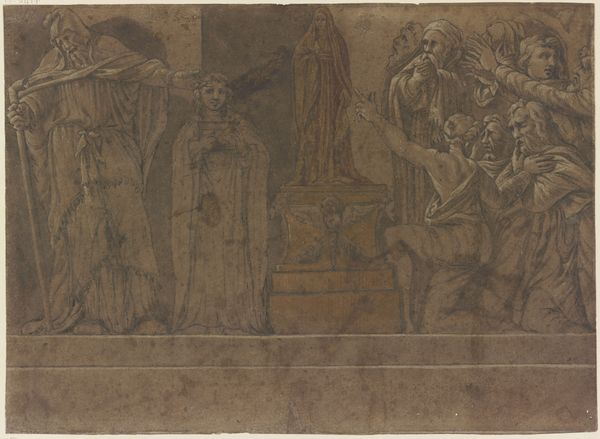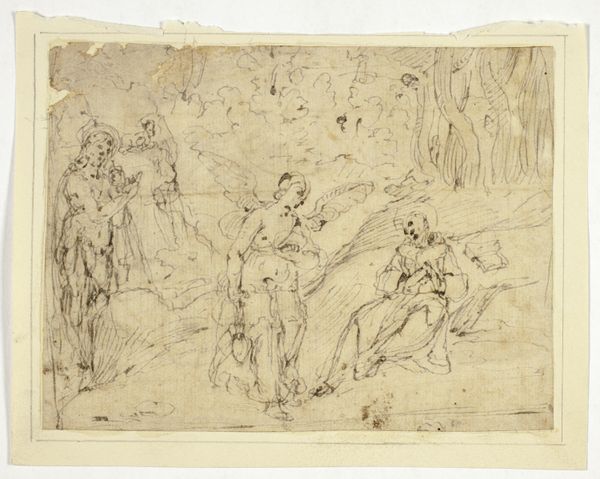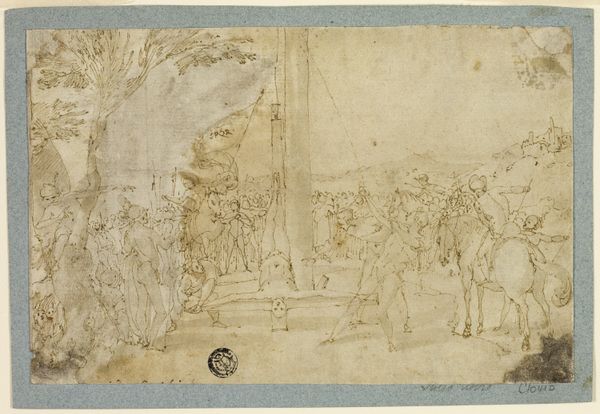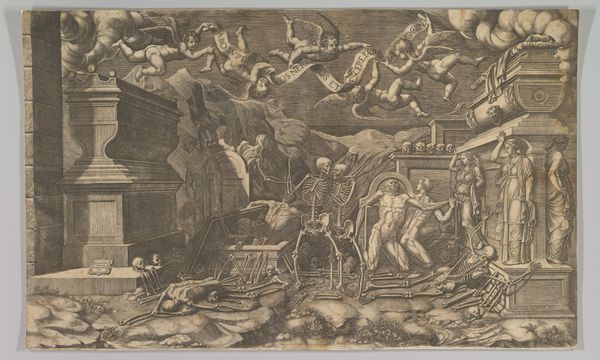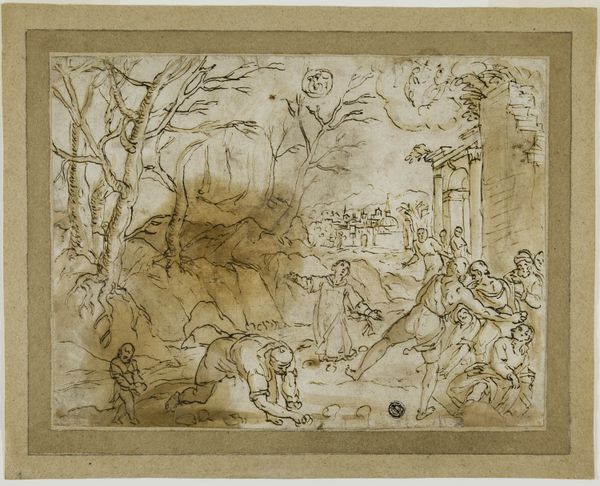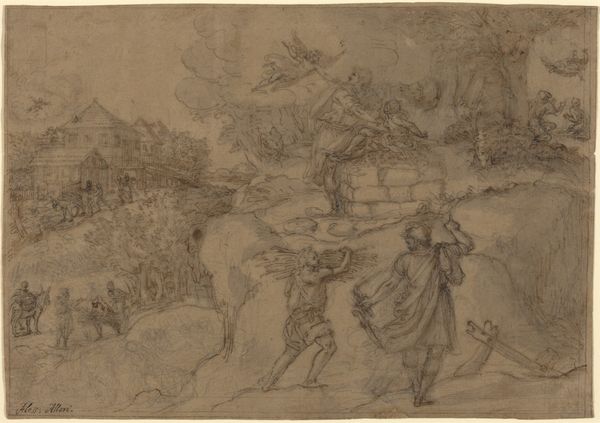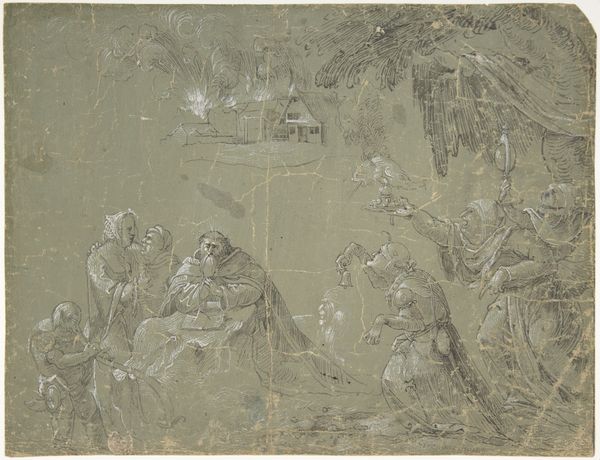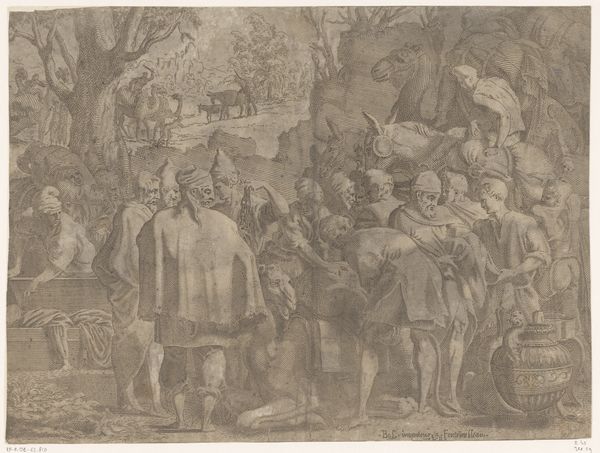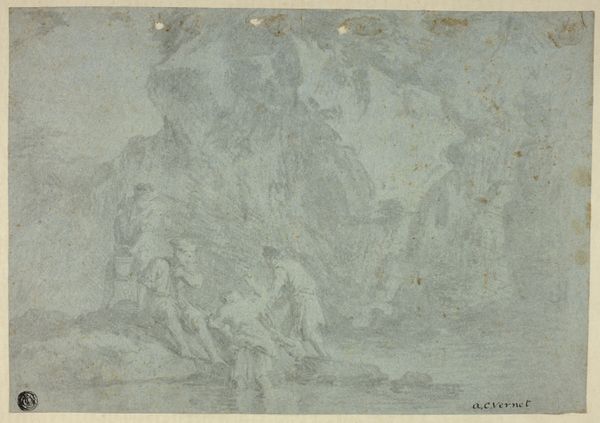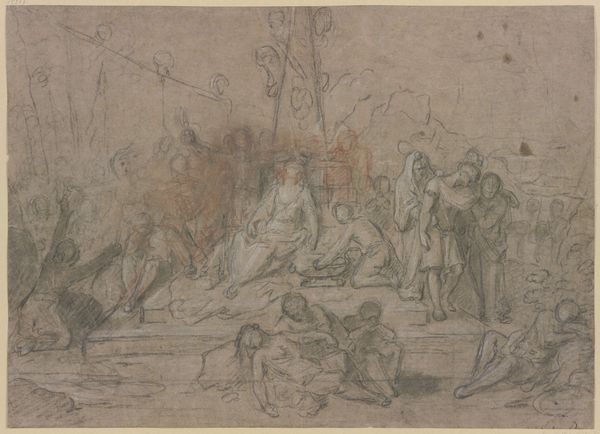
drawing, paper, ink, chalk, pen, charcoal, black-chalk
#
drawing
#
ink painting
#
landscape
#
figuration
#
paper
#
ink
#
chalk
#
pen
#
genre-painting
#
charcoal
#
academic-art
#
black-chalk
Dimensions: 165 × 230 mm
Copyright: Public Domain
Curator: What strikes me immediately about this piece is the energetic composition, the stark contrast between the fore and background, and how Magnasco renders this imagined landscape. Editor: Let’s start with context. What can you tell us about Alessandro Magnasco’s "Diana and Nymphs," executed in pen, black chalk, charcoal, and white chalk on paper? Curator: Magnasco, active in the late Baroque period, frequently depicted unconventional subject matter. His interpretations of mythological scenes were a bit, shall we say, more spirited than those of his contemporaries. In this work, the goddess Diana, known for her independence and connection to nature, is often seen in the company of nymphs. However, Magnasco adds his unique flair. Editor: I'm picking up what you're laying down: these women here aren’t just innocently frolicking. There’s a strong hint of anxiety in this rendering, amplified by the murky lighting and those huddled figures almost dissolving into the background, while one lone nymph on the left seems very eager to exit the situation. It has undertones of the ways powerful women can hold the powerless captive within prescribed social boundaries. Curator: Precisely! His expressive style heightens the drama and underscores the tensions inherent in such power dynamics, perhaps commenting on gendered social hierarchies. Editor: Tell me more about the execution here. Are there intentional details or choices in form that push forward those possible messages? Curator: Note how he employs rapid, nervous strokes that add to the unease of the piece; the composition directs our eye toward that shadowed space, creating an air of mystery and potential threat. Even the contrast in shading amplifies those elements and overall mood. Editor: A final thought, maybe: While a formal analysis points to dramatic tension through stylistic techniques, understanding the artwork within its sociopolitical timeframe—particularly notions of gender and power—provides another critical layer of understanding the piece's deeper cultural implications. Curator: I find both interpretive frameworks allow the work to reveal multiple, co-existing narrative dimensions about social roles and dynamics, enriching our dialogue with it.
Comments
No comments
Be the first to comment and join the conversation on the ultimate creative platform.
